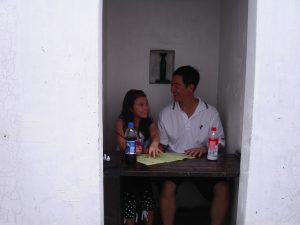5] “To raise the question of ‘authenticity’ is to challenge not only the narrative but also the ‘truth’ behind Salish ways of knowing “(Carlson 59). Explain why this is so according to Carlson, and explain why it is important to recognize this point.
In Keith Carlson’s Orality about Literacy: The ‘Black and White’ of Salish History, he exposes and critiques Western misconceptions of Salish people in regards to their history of literacy (or, as ethnocentrically Western worldviews purport, their lack thereof). He calls upon, for instance, Okanagan elder Harry Robinson’s story of Coyote and his white twin brother, as well as Bertha Peters’ narrative of the transformed chiefs. Both Robinson’s and Peters’ accounts share one overarching commonality— that God intended for Salish people to be literate. Yet despite these narratives and the fact that they contain post-contact content, they are still referred to by Westerners or newcomers as “legends” or “mythologies” (Carlson 56). Westerners have and likely will continue to perpetuate the idea that they imposed literacy upon North American aboriginals via colonialism— but why? Carlson tackles this question by appealing to the discrepancies between Western and Salish assessments of what constitutes “authenticity” as well as historical accuracy.
The Salish, by and large, do not have any conception of “authenticity”— in fact, “neither reality nor authenticity is part of the indigenous criteria for assessing stories” (Carlson 56-57). Rather than authentic or inauthentic stories (such as teek-whl or sqwélqwel), there are instead better remembered/conveyed or less well-remembered/conveyed stories (Carlson 57). And as such, there exists a fundamental confusion among Westerners in regards to how to assess historical accounts of Salish literacy, one that has led largely to their lack of insight into Salish historical consciousness.
Historical accuracy, which both Westerners and the Salish are highly concerned with, is also assessed in highly opposing ways. For Westerners (especially those in academia), historical accuracy is dependent on verifiable and concrete evidence (Carlson 57). We as students in the Western world know that citing evidence (whether in a works cited page or a bibliography) is crucial; failure to do so will often be construed as plagiarism! For the Salish, however, historical accuracy is assessed via “relations to people’s memories of previous renditions or versions of a narrative and in relation to the teller’s status and reputation as an authority” (Carlson 57).
In questioning the authenticity of Salish people’s narratives, newcomers/Westerners are, as Professor Paterson suggests, challenging fundamental Salish ways of knowing; they are essentially challenging an entire worldview and another group’s way of being, all while simultaneously imposing their worldviews upon them. Having been immersed in one worldview for the majority of my life, I can somewhat understand the biases one may have in thinking that their view, one they have long been steeped in, may be best. It is by no means an easy feat to expand one’s ways of knowing (or to even attempt to understand other ways), however, it is absolutely necessary to do so; like in this course, it is only possible to be enlightened with informed insights and understandings if one is truly receptive and open to worldviews aside from their own. Perhaps equally important to being receptive is having access to these worldviews in the first place— is knowing of them. Ensuring that we do not silence Indigenous voices, then, is also vital. Ignorance prevents us from taking steps necessary to understand and it also breeds intolerance. Taking the initiative and time to understand Indigenous worldviews may help pave the way (no matter how slowly) towards true reconciliation.
Works Cited
Carlson, Keith Thor. “Orality and Literacy: The ‘Black and White’ of Salish History.” Orality & Literacy: Reflections Across Disciplines. 43-72. Print
Paquin, Mali Ilse. “Unsolved murders of indigenous women reflect Canada’s history of silence.” The Guardian. Guardian News and Media Limited. 25 June 2015. Web. 29 June 2016.
Gilmore, Scott. “Canada’s race problem? It’s even worse than America’s.” Macleans. Rogers Media. 22 Jan 2015. Web. 29 June 2016.
